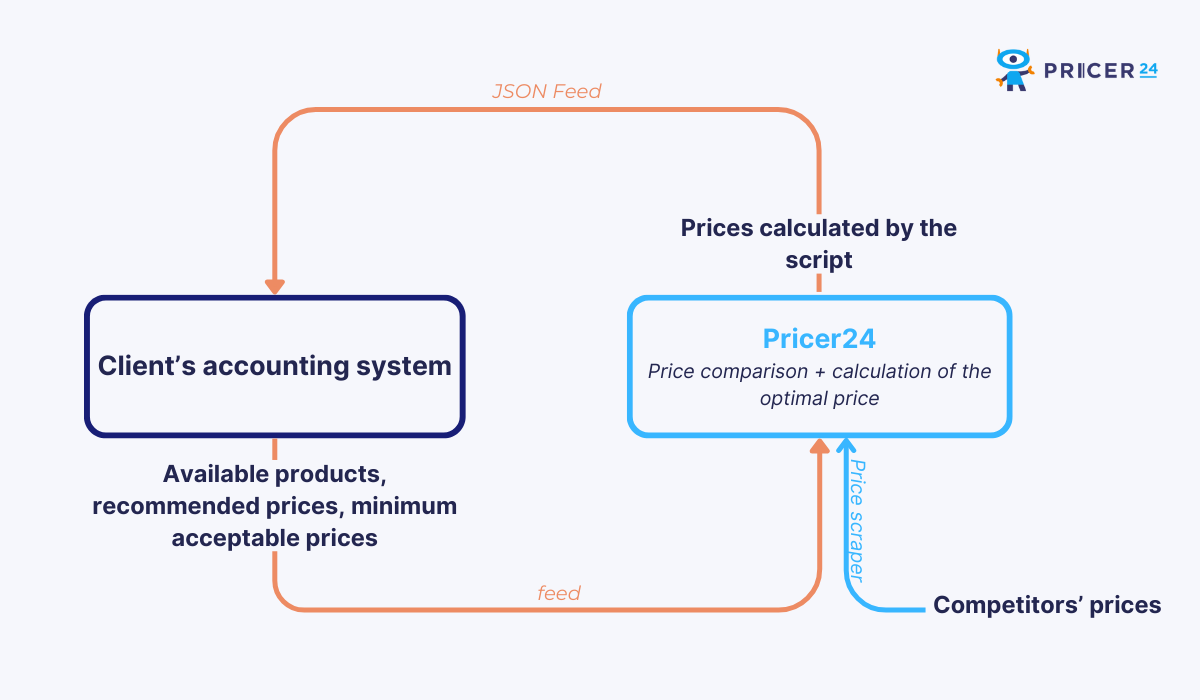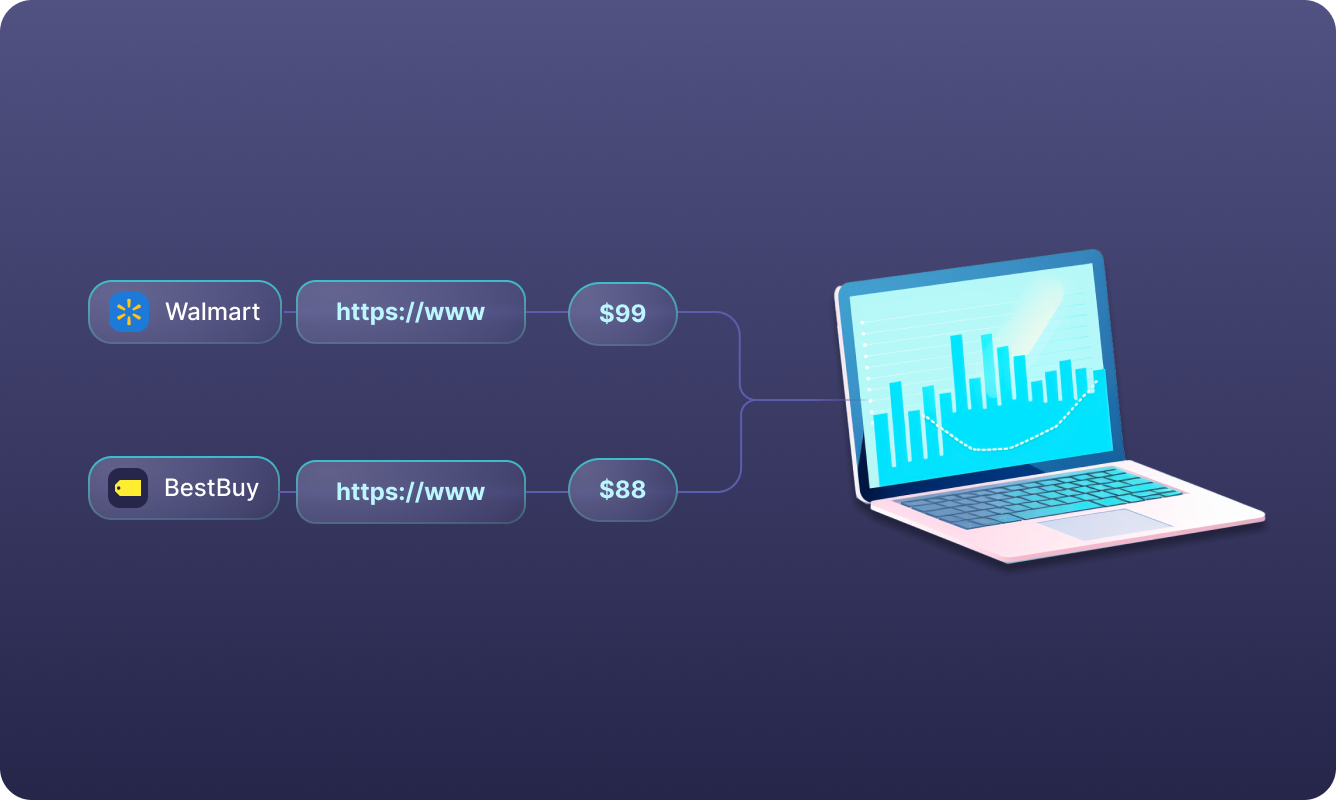Sell products at a loss and call it a strategy? Paradoxically, this is exactly the approach some companies take — selling products below cost to attract customers and then making up for the losses by selling higher-margin, related products. The loss leader strategy can lead to either great success or quick failure.
In this article, we’ll examine the loss leader strategy’s essence, key features, benefits, and drawbacks, as well as the factors that can determine its success.
Contents:
What Is a Loss Leader Strategy
How Online Stores Use a Loss Leader Strategy
How Manufacturers Use a Loss Leader Strategy
Benefits of a Loss Leader Strategy
Risks of a Loss Leader Pricing Strategy
How to Implement a Loss Leader Strategy
What Is a Loss Leader Strategy
A loss leader strategy is a pricing approach where one or more products or services are intentionally priced below cost or market value. Retailers and manufacturers use this pricing strategy to attract attention, capture market share, or build brand loyalty, even if it results in short-term losses.
Features of the this pricing approach:
- A low price is typically set for popular, in-demand products, the so-called “hook” products that draw in a large number of customers.
- The business is willing to absorb temporary losses for the sake of long-term benefits, such as increasing market share, displacing competitors, or building customer loyalty.
- The strategy assumes that customers will not only buy the low-priced “loss leader” product but also purchase related products or services with higher margins.
For example, an online store selling household chemicals might offer popular laundry capsules at $5, even though they cost the store $7. This is considered an “anchor product” — a regularly purchased item that entices customers to take advantage of promotional deals. When placing an order, the customer might be offered a “bundle deal” — additional products like household organizers, fabric softener, antistatic sprays, washing machine care items, or laundry baskets.
Although the “loss leader” product is priced at a loss, the customer spends an additional $30 on related products. These products have higher margins that offset the losses, and the online store potentially gains a loyal customer who will return for future purchases.
The loss leader pricing addresses several goals:
- Attracting Customers: The low price is a strong incentive to choose this offer.
- Increasing Market Share: Once on the website or in-store, customers typically buy not only the loss leader product but also other higher-margin items, boosting sales across the entire product category and increasing overall revenue.
- Building Customer Loyalty: A positive first purchase experience, paired with effective follow-up communication, strengthens trust and encourages long-term customer loyalty.
- Displacing Competitors: Offering low prices on key products can financially strain competitors who lack the resources to absorb the losses, potentially forcing them to scale back their presence in the category.
How Online Stores Use a Loss Leader Strategy
In e-commerce, the loss leader pricing strategy is often employed when entering a new, highly competitive market, clearing out product inventory, attracting new customers, and driving sales. Let’s explore these scenarios in more detail.
Entering a Highly Competitive Market
When an online store enters a competitive niche, it may offer popular products — category drivers — at prices below cost. This strategy serves as a strong marketing “hook,” drawing in attention, creating a win-win scenario, and quickly capturing market share.
For example, in its early days, Amazon sold books at a loss to become the leading online book retailer. This approach helped the company attract a broad audience, which eventually started purchasing more expensive products.
Seasonal Sales
During peak sales periods, such as summer clearance events or Black Friday, competition among retailers is fierce. To stand out and drive traffic to their online stores, companies often use the loss leader strategy, selling specific products at prices below cost — sometimes at extremely low prices.
This tactic is widely used by major players in global and Ukrainian e-commerce, including Amazon, eBay, Nike, H&M, Zara, ASOS, and others.
Excess Inventory
An online store may also use this strategy to clear out excess inventory and reduce storage and logistics costs. This is particularly useful for products that haven’t sold in a while (e.g., outdated gadget models), are seasonal, or have a limited shelf life (e.g., skincare products). Even if these items are sold at a loss, it helps maintain cash flow and liquidity for the business.
Attracting New Customers
If the goal is to attract new customers, the loss leader strategy can be effective in generating demand. For instance, when launching new products, an online store might offer them at a significant discount initially. This not only encourages customers to make their first purchase but also creates opportunities for related or repeat sales that help offset the initial costs.
How Manufacturers Use a Loss Leader Strategy
Unlike retail, manufacturers use the loss leader strategy not only to boost sales quickly but also to strengthen their market position and increase brand recognition. Typically, manufacturers sell one product at a low price to create demand for their other products. In this case, the loss leader product acts as an “anchor,” encouraging customers to purchase additional goods or services. This strategy is particularly effective in niches where the main product requires consumables or accessories.
For example, HP sells printers at a low price, absorbing the loss while profiting from the sale of high-margin ink cartridges. Similarly, Sony often sells PlayStation consoles at or below cost, especially when releasing new models. The company compensates for these losses by selling games, paid online services, extra controllers, headsets, and more.
Benefits of a Loss Leader Strategy
A strategy designed to stimulate complex sales can help attract customers, increase profits through cross-selling, and foster long-term loyal relationships with customers. Let’s take a closer look at the benefits of this approach.
Attracting Customers
Price has always been, and will continue to be, one of the most powerful customer triggers. Offering a popular product at a price significantly lower than competitors’ prices will capture the attention of even those who weren’t initially planning to make a purchase from your online store.
Increasing the Average Order Value
The essence of the loss leader pricing strategy is not just to sell a “locomotive” product with minimal or zero margin, but also to encourage purchases of additional, higher-margin products. For example: razors and replacement blades, electric toothbrushes and attachments, printers and cartridges, paper, and warranty services, or game consoles and video games, subscriptions, and accessories. A popular, “loss-making” product becomes an entry point into a cycle of repeat purchases of complementary goods and services.
Boosting Brand Recognition
Promotional products sold at low prices attract both existing and new customers. This is especially important in e-commerce, where creating buzz around your brand increases online store traffic, social media activity, and overall recognition.
Gaining Insights into Customer Behavior
By offering a product as part of the loss leader strategy, an online store can gather valuable insights: which products are frequently purchased together, which audience segments respond best to the promotion, and which marketing channels yield the highest conversion rates. This data helps optimize the product assortment, offer more relevant bundles, and enhance the effectiveness of advertising campaigns.
Risks of a Loss Leader Pricing Strategy
Implementing a loss leader strategy carries several risks. Without a clear understanding of the market, a company could face financial losses and customer churn.
Loss of Profit
Selling products at cost or even below cost poses the risk of losing profit if, for example, the promotional product is a one-off solution and customers don’t go on to buy additional items. Additionally, in e-commerce, there’s a category of customers known as “bargain hunters” who focus solely on the lowest price, don’t develop brand loyalty, and may not make repeat purchases.
Ineffectiveness of Cross-Selling
To offset losses from the low price of a flagship product, a company needs to offer a sufficient range of high-margin products and effectively communicate their value to customers. If this doesn’t happen, the strategy may fail to generate the desired profits.
Financial Pressure on the Business
The loss leader strategy can be risky for companies with limited budgets or low liquidity. This approach creates additional operational burdens, and without adequate financial resources, the retailer may struggle to fund future investments or cover current payments.
How to Implement a Loss Leader Strategy
Successfully implementing this strategy requires clear planning and attention to key factors. Here are some aspects to consider:
- Choosing the Right Products
Carefully analyze your product portfolio to identify items that are in high demand, seasonally popular, or have the potential for additional sales. Look for:
- Complementary products — items that complement the loss leader and have higher margins.
- Cross-selling opportunities — encouraging customers to purchase additional products alongside the main one.
- Pricing
Consider the discount size you can offer. Research your competitors to see if they use the loss leader strategy, which products they promote, and at what discounts. To streamline this process, you can use an automated tool like Pricer24 to analyze competitor pricing.
- Promotional Offers
Develop a marketing strategy to attract customers to purchase loss leader products. This includes creating compelling content and selecting the right channels to engage your audience effectively.
- Duration of the Promotion
Decide on the optimal timing for your promotion. Creating a sense of urgency with a limited-time offer can encourage customers to act quickly and make a purchase.
- Track and Analyze Results
Monitor key performance indicators to assess the success of your loss leader strategy. Key metrics include:
- Customer acquisition cost (CAC)
- Recurring purchase rate
- Average order value (AOV)
- Return on investment (ROI)
Conclusions
The “loss leader” strategy can be highly effective in attracting a large volume of customers and boosting sales. However, without a well-planned approach and thorough analysis of your product assortment, pricing, and competitors’ offers, the risks may outweigh the benefits.
To ensure you’re on the right track and able to adapt to changes swiftly, it’s essential to use modern analytical tools. Pricer24 enables you to track competitors’ assortments and pricing policies, adjust your prices in real time, and maintain a balance between offering attractive deals to customers and ensuring business profitability.









